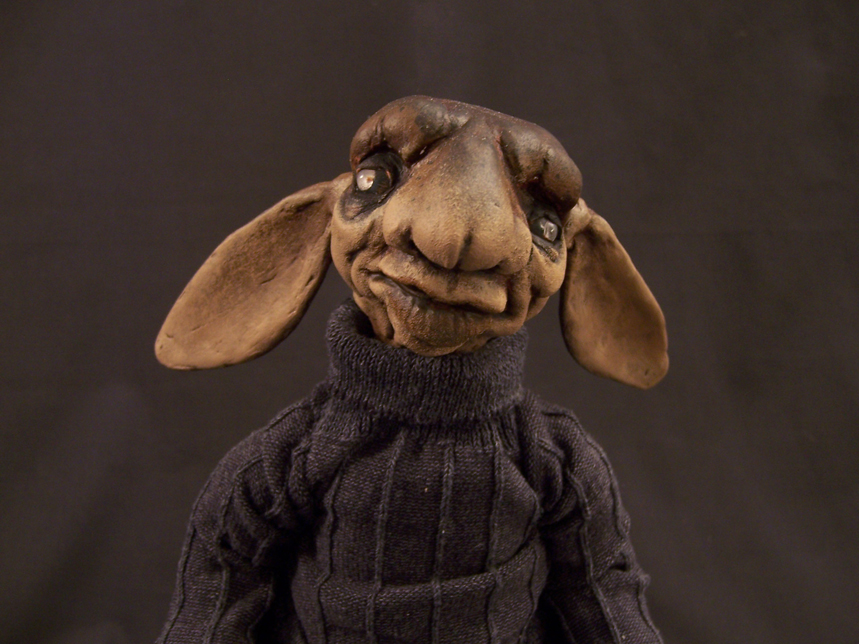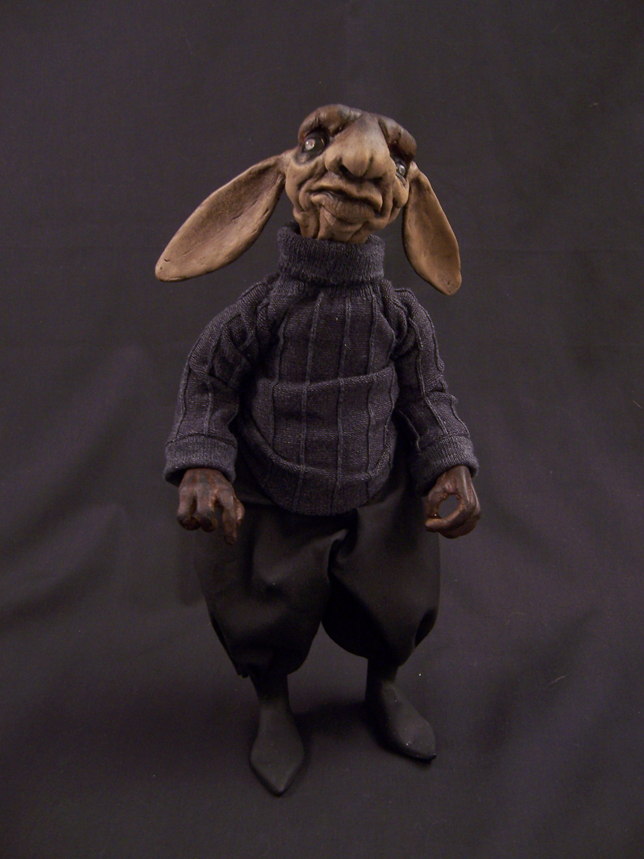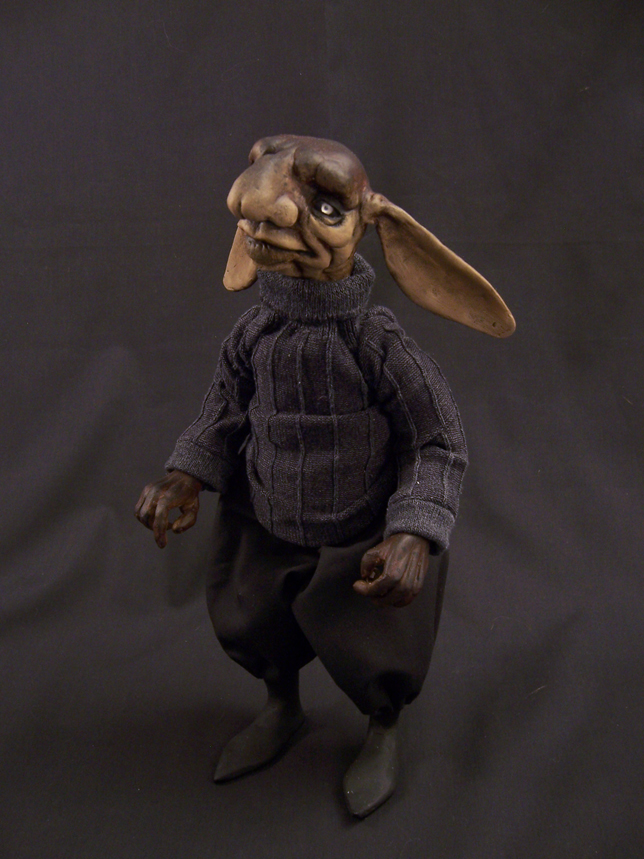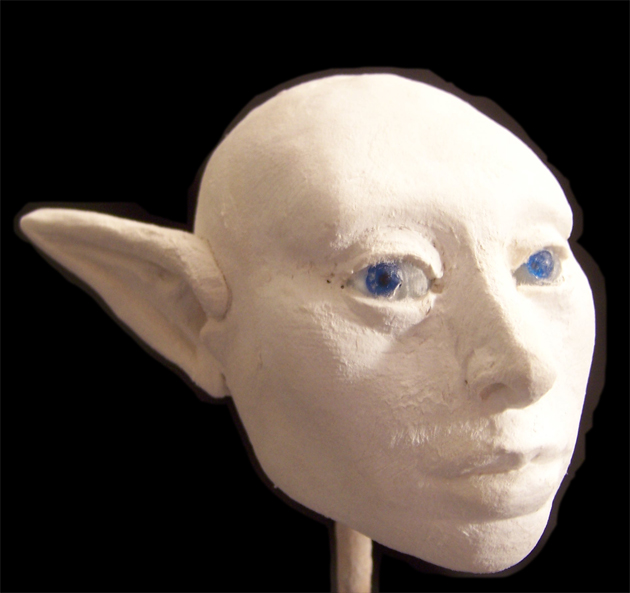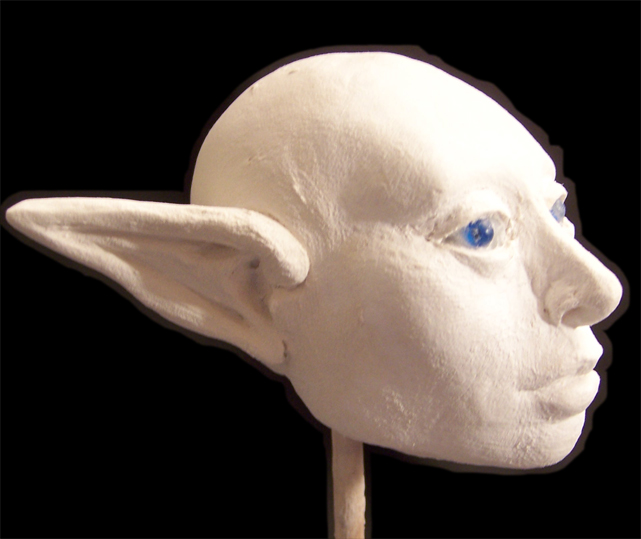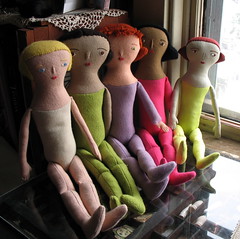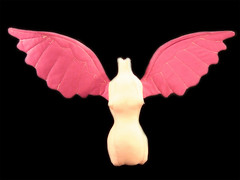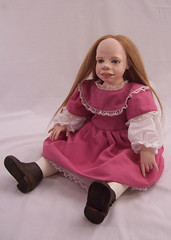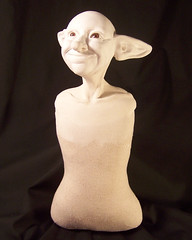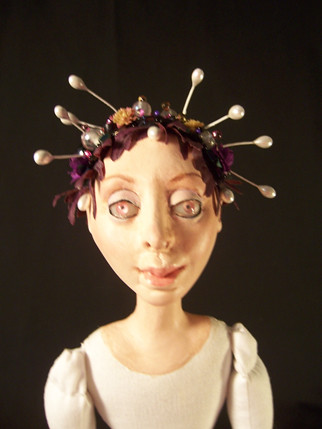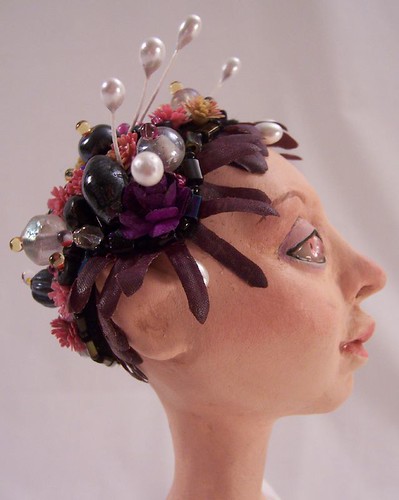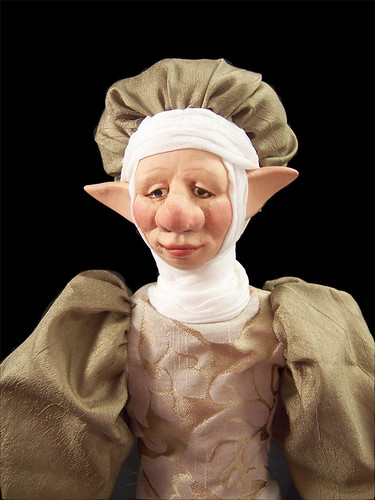
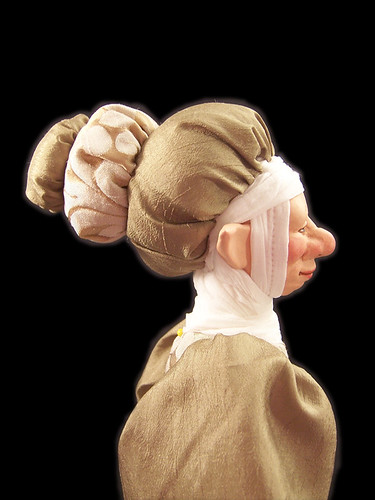
I am experimenting with mold making. At the moment, I am using Antonette Cely's technique from her book, "Cloth Doll Making." Her instructions are very easy to follow for mold making. The only problem I encountered was overcoming my fear of pouring plaster over a sculpt in order to make the mold. The sculpt is a significant investment of time and I certainly don't want to waste supplies. But I took the time to make sure there were no undercuts on my sculpt. After the plaster was dry, the original sculpt came right out of the mold with no distortions.
After overcoming my fears and trepidations, I made a second sculpt and subsequent mold. The doll pictured to the right is cast from that mold. I just had to make a big nose fae.
One of the benefits of mold making, is I am able to focus on other aspects of dollmaking. In particular, I want to work on my costuming skills. I like sculpting, but I don't like having to sculpt a new head every time I make a doll. Even though it is a mold, I can still manipulate the clay after it comes out of the mold and create a unique doll head. Besides, it seems most of the books I have read about dollmaking suggest mold making. It is one more useful skill to have under your belt.
I welcome any constructive criticism and comments. I will post pictures of this doll's progress.

